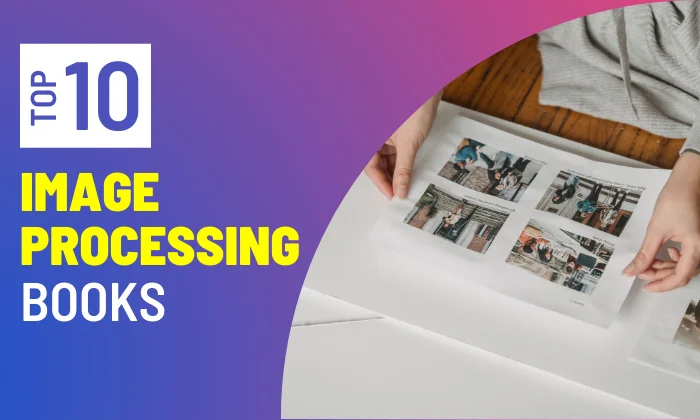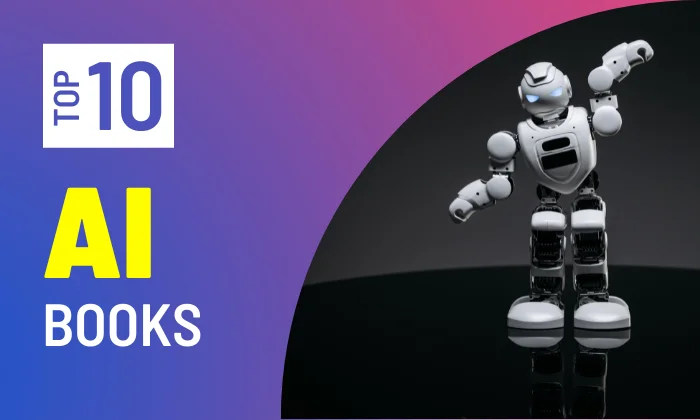These are the top 10 Image Processing books that will help you learn and implement Image Processing.

1. Digital Image Processing, 4Th Edition
by Rafael C. Gonzalez
This fourth edition, which marks the book’s anniversary of its establishment, is based on feedback from staff, students, and independent readers. As a result of their comments, topics like deep learning and deep neural networks have been enhanced or added to the content. The content on image transforms is reorganized into a more cohesive presentation, and the description of spatial kernels and spatial filtering was greatly improved. MATLAB projects and practicals are included at the end of each chapter for the first time
There are support packages for students and instructors that include solutions, image databases, and example code. The concentration in this edition of the book, as in previous editions, is on basics.
2. Digital Image Processing Using MATLAB, 2nd Edition
by Rafael C. Gonzalez, Richard E. Woods, Steven L. Eddins
The material from the leading text is incorporated into the book. It is the first book to provide level-headed image processing basics and also the software ideas that are utilized to implement them. The toolbox of image processing is a reliable and well-supported software environment for a wide range of digital image processing applications. The book’s emphasis on explaining how to improve such tools by writing new code is a standout feature. This is critical in image processing, which typically necessitates a great deal of experimentation to arrive at acceptable application solutions. There are 100+ new MATLAB image processing functions developed in this new toolbox, which is a 50% increase from the previous editions.
3. Fundamentals of Digital Image Processing: A Practical Approach with Examples in Matlab
by Chris Solomon, Toby Breckon
The approach in this book is practical, and the book provides a framework within which the principles can be comprehended through a series of carefully chosen examples, exercises, and computer experiments. This book comprises an introduction to intermediate-level text on image processing that uses the Matlab programming language to demonstrate some of the basic, important principles in current image processing and pattern recognition. To make the following topics more accessible, the book starts with a quick introduction to image processing. The following chapters go into greater depth on issues involving more difficult ideas, with the final chapter focusing on the use of automatic image classification.
4. An Interdisciplinary Introduction to Image Processing: Pixels, Numbers, and Programs (The MIT Press)
by Steven L. Tanimoto
This book looks at image processing from a variety of angles, including creative, theoretical, and software kind of. It presents computer programming as a tool to gain more control over image processing procedures, drawing on important concepts and techniques from mathematics, psychology of perception, computer science, and art to teach the basic principles of image processing. It accomplishes this without the need for college-level mathematics or previous programming knowledge. Digital picture representation, sampling, brightness, and contrast are all covered in the first section of the book. The book’s second section covers computer programming with an open-source version of the simple Python language. It walks you through the fundamentals of picture analysis and pattern detection.
5. Python Image Processing Cookbook: Over 60 recipes to help you perform complex image processing and computer vision tasks with ease 1st Edition
by Sandipan Dey
As the demand for people with digital image processing skills grows in order to extract useful information from the ever-growing volume of images, this book provides comprehensive coverage of the relevant tools and algorithms. You’ll learn how to accomplish complicated tasks like object identification, picture segmentation, and image reconstruction utilizing huge hybrid datasets while addressing common image processing challenges. You’ll also learn how to use various image enhancement and restoration techniques in dedicated sections. This book will teach you how to use deep learning techniques like transfer learning and fine-tuning to address real-world problems. By the end of this book, you’ll be able to successfully use the Python ecosystem’s capabilities to develop numerous image-processing approaches.
6. Pillow: Image Processing with Python
by Michael Driscoll
The Pillow package, a friendly modification of the Python Imaging Library, is the only book that covers it. The book’s first few chapters will get you started on the road to knowledge and will show you how to utilize Pillow efficiently. Whether you’re a newbie to Python or a seasoned programmer, the author will guide you on your way to becoming a better developer. Whether you’re a newbie to Python or a seasoned programmer, the author will guide you on your way to becoming a better developer. With the help of this book, the readers will be going to crop the photos, they can also play with filters or colors of the photos professionally. The reader can draw the shapes or add text to images too.
7. Principles of Digital Image Processing: Core Algorithms
by Wilhelm Burger, Mark J. Burge
This second edition teaches digital image processing in a modern, algorithmic way. It is targeted at both learners looking for a solid foundation and practitioners looking for critical analysis and modern implementations of the most significant approaches. It builds on the foundational techniques taught in the first volume (Fundamental Approaches) by introducing new techniques which are mostly used in image processing.
The textbook includes a critical selection of algorithms, illustrated explanations, and brief mathematical derivations for readers to obtain better knowledge. This reader-friendly text will provide students with a deeper comprehension of the topic as well as essential information for self-study.
8. Practical Image and Video Processing Using MATLAB
by Oge Marques
This is the first book to demonstrate the most essential image and video techniques and algorithms by combining image and video processing with a practical MATLAB-centred approach.
The book is divided into two sections. The first section covers image processing with the essential concepts, notation, and vocabulary related to image representation and basic image processing procedures, followed by an overview of the topic. It then moves on to MATLAB and its Image Processing Toolbox, which offers activities and process instructions. Part I: Image Processing presents the essential concepts, notation, and vocabulary related to image representation and basic image processing procedures, followed by an overview of the topic. It then moves on to MATLAB and its Image Processing Toolbox, which offers activities and process instructions.
9. Digital Image Processing using MATLAB: ZERO to HERO Practical Approach with Source Code
by Arsath Natheem
This book will teach you everything you need to know about digital image processing. Image processing’s importance and requirements originate from its application areas. Images that have been deteriorated or blurred are processed using image processing processes such as restoration and image enhancement. There are many medical fields where image processing has an effective use like in astronomy, medicine, and many others.
Also, images are also helpful in the monitoring of earth resources, as well as the predicting of urban populations, crops, climate forecasting, flooding, and fire suppression. The current main application of digital image processing methods is to solve the problem of machine vision to achieve better results.
10. The Image Processing Handbook 7th Edition
by John C. Russ
This book provides an easy and up-to-date study of image processing, with a wide range of algorithms covered and compared, as well as approaches and outcomes. In comparison to earlier versions, this version has a broader range of cognitively complex methods. This book provides better organization, quantitative data, and new material on recent advances, which are all included. Entirely new chapters on 3D modeling and a completely rewritten chapter on statistical analysis, are included. This book includes thousands of references for the disciplines of applications, practicals, or theory-related stuff. There are so many colorful images in the book which helps the reader understand the concepts easily.
Stay tuned to AiHints for more insightful tutorials on web development, programming, and artificial intelligence. Happy coding!


